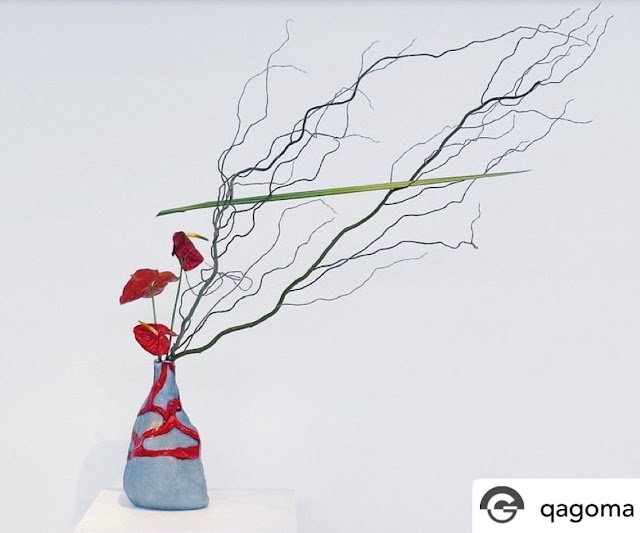LIGHT COLOURS IN A DARK SPACE
SIMPLIFIED IKEBANA
In a recent class, I had set my Melbourne students the Sogetsu curriculum exercise of making a "Simplified Ikebana". In this exercise students are encouraged to study the materials carefully and then remove all elements that are extraneous to their design. The main challenge is to not remove so much that the original material becomes unrecognisable. Below are before and after photographs of the exercise I took in 2015, when I had the presence of mind to take them.
The branch material was the main stem of a dead Ivy, Hedera, that had been climbing a tree. To make the comparison easier the photo on the left has been rotated, because it was taken with the branch lying on its side on a table.The photos from the classroom are only of the finished ikebana.
Eugenia used a small branch of Calistemon without any flowers and most of the leaves removed. The unusual vase really suited the angular lines in the branches, which have been flattened in the photograph unfortunately.
In a second example she again showed the angular lines in a branch of mostly defoliated Banksia, which was set in a green bottle-shaped vessel.
Marcia used a stem of prunus and a single Camellia bud. All the side branches and most of the leaves were removed.
In a second example, the main stem was reduced to a single angular line beside which stood a single line of ... blossom
Jacqueline had brought a stem of Cymbidium orchids. Only a single flower was used. The dried branch that was chosen to be included had to be inverted to fit into the narrow opening of the vase.
Although all the materials I had used in the first ikebana fitted that description, I thought I should be using something different for the next exercise. I particularly wanted to use the Dutch Iris Iris x hollandica that I had grown in a pot, as well as some of the red Japanese flowering quince Chaenomeles.
When I came to place the iris in this simple (not simplified) ikebana the flowers were far too large. The solution was to use the leaves only, which added a feeling of freshness. This style of arranging the materials all arising from a single line was my "nod in the direction" of Ikenobo traditional practice.
The domed ceramic vessel is by the Victorian ceramic artist Owen Rye.
17th September 2023
UNCONVENTIONAL MATERIAL and VEGETABLES
This zoomed photo shows a large "bow wave" on the ship-like "Bird Rock" at the end of Jan Juc beach. The temperature had fallen from the low 20s to 12 Celsius (!). Changeable spring weather.
In early August I had set my senior students the exercise of making an ikebana incorporating Dutch Iris Iris x hollandica and vines. Last week, while trawling through my photo library, I discovered that I had not included the photos below from my Melbourne class; the reason being that my classes in Geelong and Melbourne are on completely different schedules. Here are the photos from my Melbourne students:
QUEENSLAND SOGETSU BRANCH 60th ANNIVERSARY
Eleven days ago, on 24th August, I attended the evening reception and online demonstration held in celebration of the Queensland Branch of the Sogetsu School's 60th anniversary.
The Art Gallery of Queensland is privileged to hold this large bronze-sheathed wooden sculpture by Sofu Teshigahara, the founder of the Sogetsu School of Ikebana. The sculpture was especially placed on display in recognition of the 60th celebration. It was placed next to the current week's ikebana arrangement made by a Queensland Sogetsu Branch member. A fresh ikebana arrangement placed in the Gallery has been the weekly practice of Queensland Branch for almost 30 years.
The ikebana arrangement for the week of the anniversary was created by Robyn Cuming using Anthurium flowers and leaves which rise above dried Mitsumata Edgeworthia chrysantha branch stems from a footed, trough-shaped vessel.
On the evening of 24th August a live on-line demonstration, from Sogetsu Headquarters in Tokyo, was screened in the theatre of the adjacent Queensland Art Gallery of Modern Art (QAGOMA).
This ikebana was created in QAGOMA by the Queensland Sogetsu Branch Director, Wendy Hoskin, using Tortuous Willow, Anthurium flowers and a single variegated New Zealand Flax leaf.
The above ikebana, also in the QAGOMA foyer space, was made by senior teacher Pat Mackie. She has used dried Mitsumata branches, orchids and other unidentified materials.
In the theatre, on the stage below the screen, was set a large ikebana installation. The materials used were natural and coloured bamboo, bleached Fan Palm and Monstera leaves. It was created by a team including: Vernisher Wooh, Christine Wyer, Ikuko Okada, Tomomi Tanowaki, Christine Chen, Masako Morrison, Samantha Wooh and Chiu Lan.
A photo of one of the arrangement from the online demonstration by the Master Instructor Sozan Nakamura can be seen on this link. I would encourage you to explore Mr Nakamura's Instagram to see the wide range of his ikebana expression.
The celebration presented an opportunity for four of the five current Australian Sogetsu Branch Directors to meet face to face for the first time.
L - R Christopher James (me, Victoria), Wendy Hoskin (Queensland), Ray Bywaters (South Australia), Hiroko Prado (New South Wales).
On a completely domestic scale...
...I made this ikebana recently for an elderly ikebana friend using five Dietes leaves and a bunch of Chrysanthemums.
This photo was taken with a mobile phone camera and some others above are screenshots and therefore may be a bit grainy.
3rd September 2023


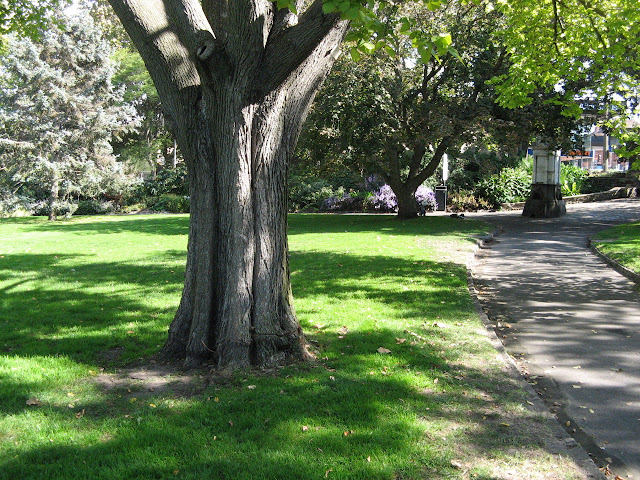


.jpeg)

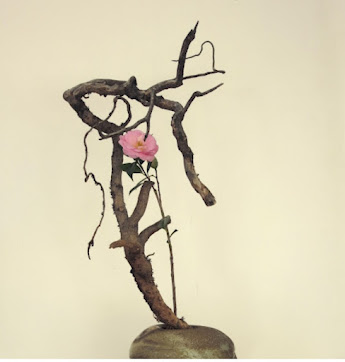


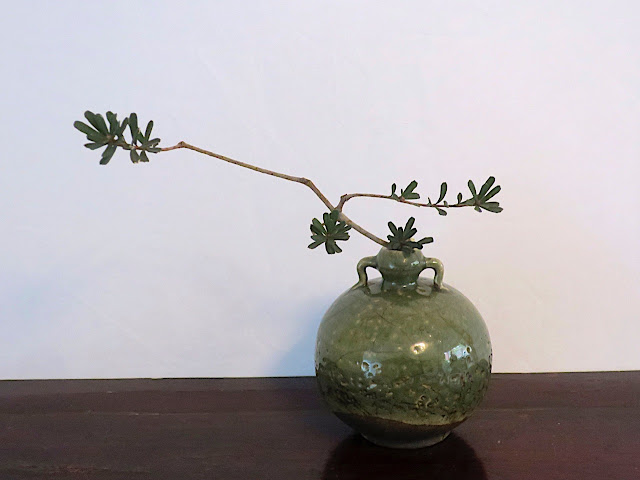

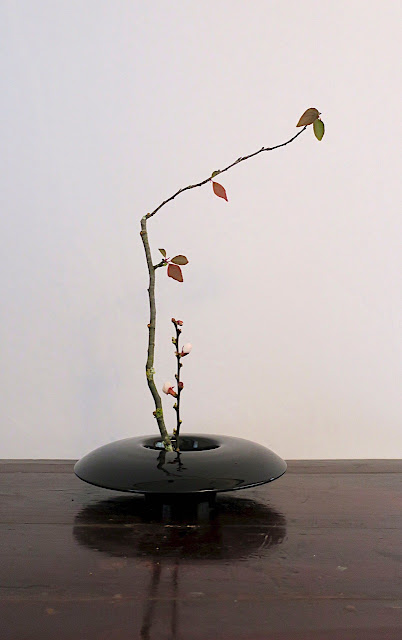















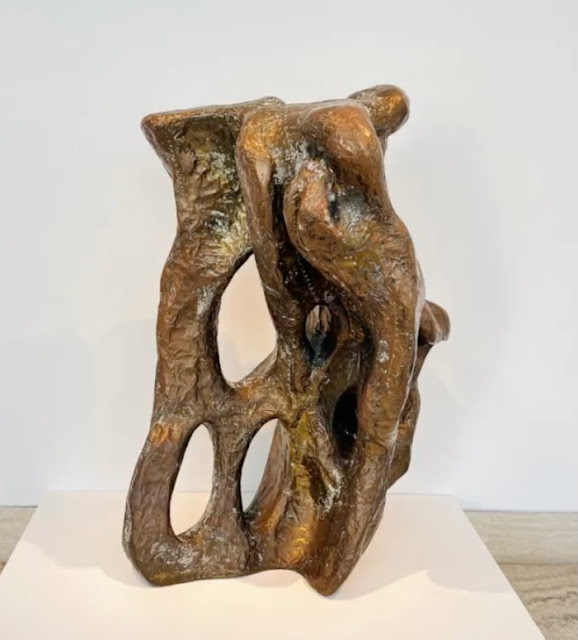
.jpeg)
